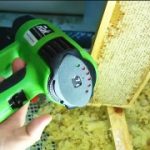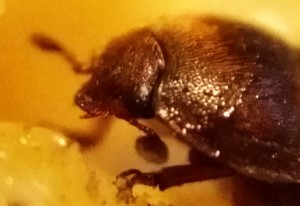HOT knife vs HEAT gun honey extraction. Beekeepers dilema
HOT knife vs HEAT gun? The WINNER IS? – PART 1
Visit http://www.mahakobees.com for many great videos. Here, we study the claim that a heat gun is faster and generally better for uncapping raw honey frames. Take a look and you be the judge!
There are many ways you can extract a fresh fully capped honey frame. Generally, most smaller home based or hobby beekeepers will uncap their honey frames using a HOT knife (see our tempting closeup Beekeepers Hot Knife Uncapping Video – https://www.youtube.com/watch?v=1iqfW_0EHVw), Serrated Kitchen knife, or the Beekeeping Uncapping Fork. This is sufficient for beekeepers with 1 to possibly 50 beehives. It may get too time consuming to use these methods beyond this number of hives and automation may be a wise choice with semi or fully automated spinning uncapping blades or wires.

heat gun
There is however, yet another method that has been revealed on numerous other beekeeping YouTube videos and beekeeping websites. This involves the use of a HEAT gun. So, we thought we would give it a try, bought ourselves a ROK Heat Gun and recorded the process and results of this experiment. Our part 1 video examines the results one could expect by using this HEAT gun method, and we compare the results with the more traditional beekeepers HOT knife method. We explain both in detail so you can make your own opinion, and hopefully try and test them yourself following our easy instructions. Both are a valid method, both have their unique benefits and disadvantages and both may suit you depending on your specific application and situation.
In part 2, we will review the results in more detail – post honey extraction. Make sure you don’t miss it. We hope you find our videos valuable enough to share with your family, friends, colleagues and beekeeping associations, subscribe and if you would like to let us know how we are doing, please press the thumbs up or down accordingly. Your feedback is very important to us and we appreciate your time.
BEE nice and have a great beekeeping weekend!
MahakoBees
Support us on PATREON
•Website: http://www.mahakobees.com
•Blog: http://mahakobees.com/blog/
•Blog kids: http://beekeepingwithkids.blogspot.com.au/
•Youtube: https://www.youtube.com/user/mahakobees
•Google+: https://plus.google.com/+MahakoBees
•Pinterest: http://www.pinterest.com/mahakobees/
•Twitter: https://twitter.com/mahakobees
•Flickr: https://www.flickr.com/photos/125372235@N04/
•Stumbleupon: http://www.pinterest.com/mahakobees/
•Reddit: http://www.reddit.com/user/MahakoBees/
•Tumblr site: http://mahakobees.tumblr.com/
•Tumblr blog: https://www.tumblr.com/blog/mahakobees




